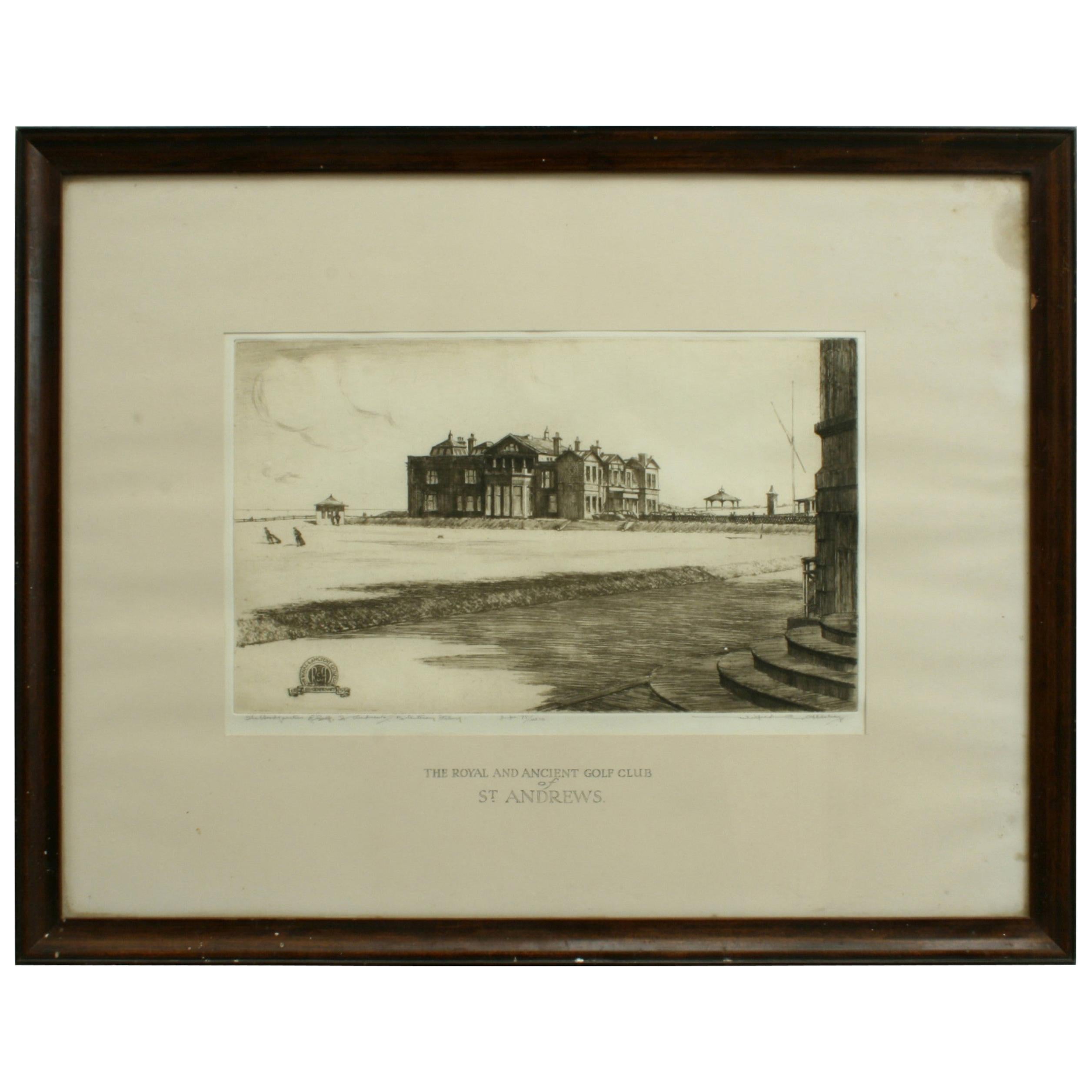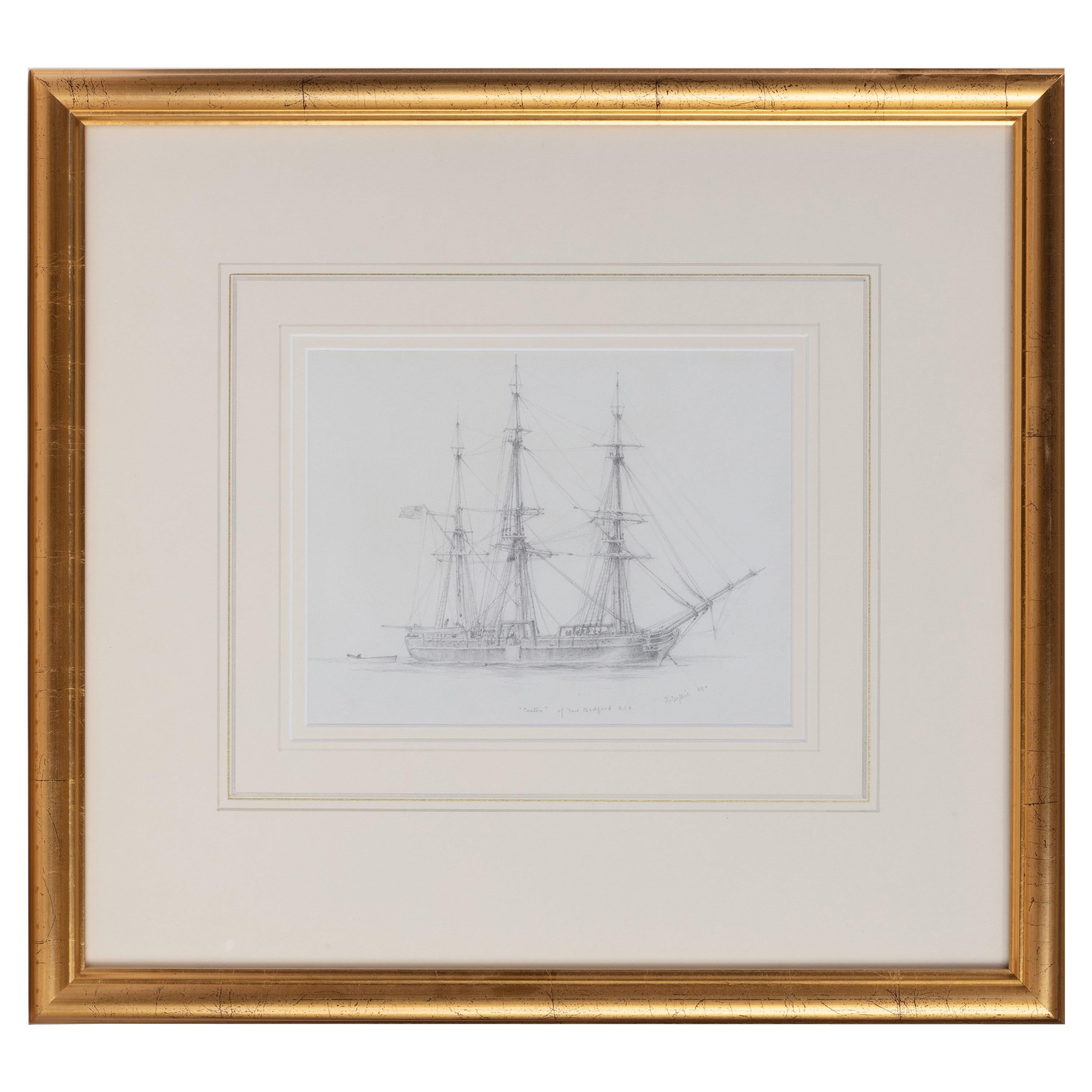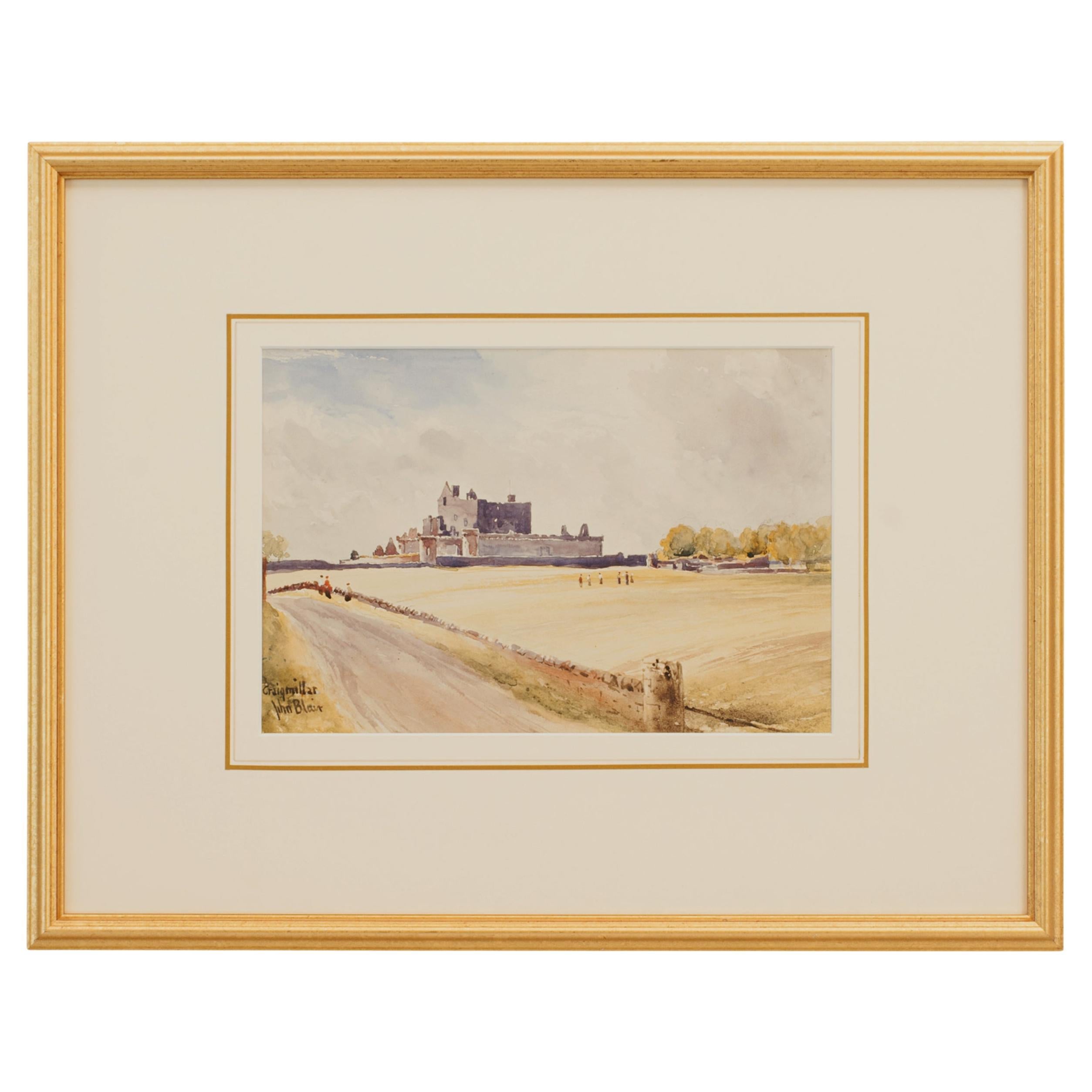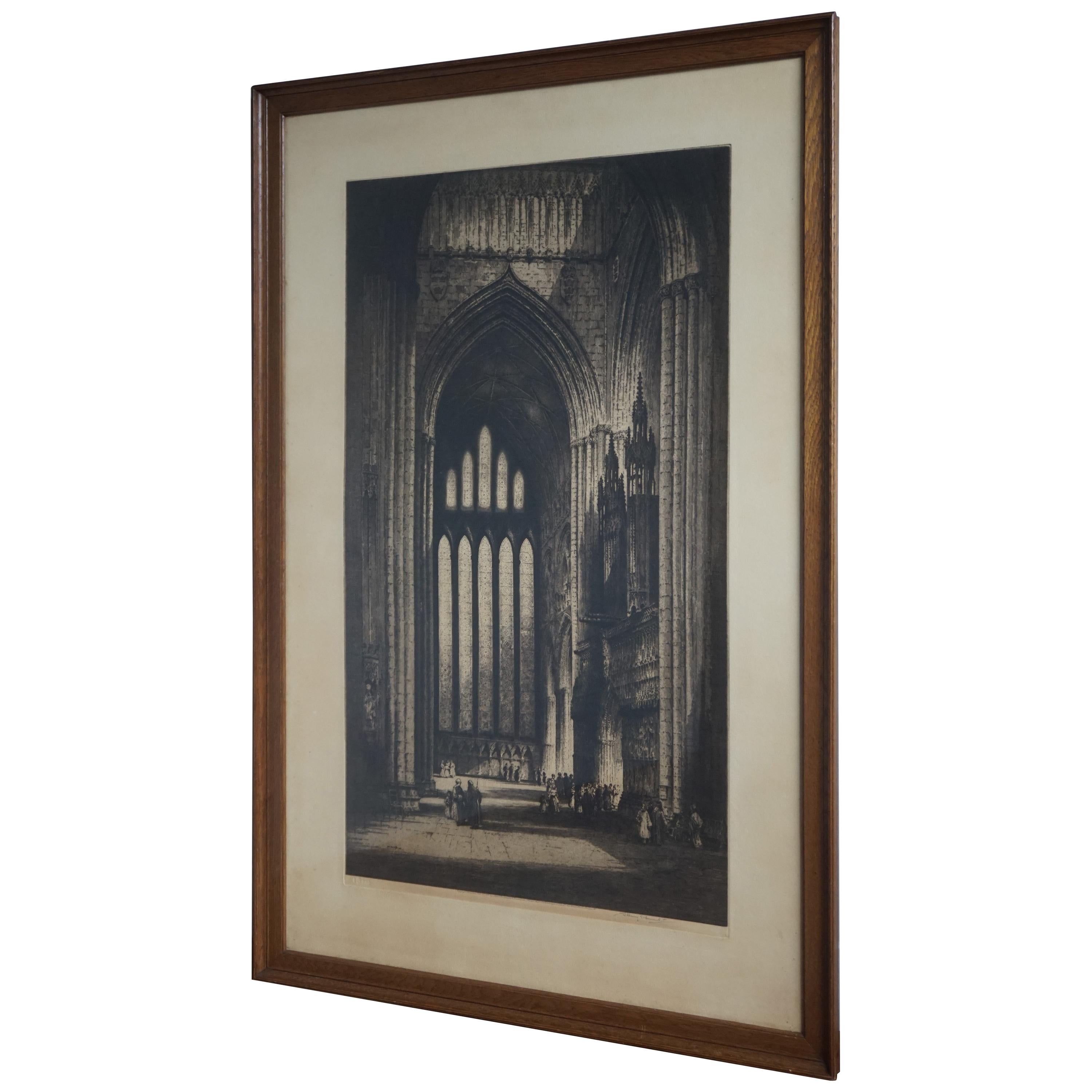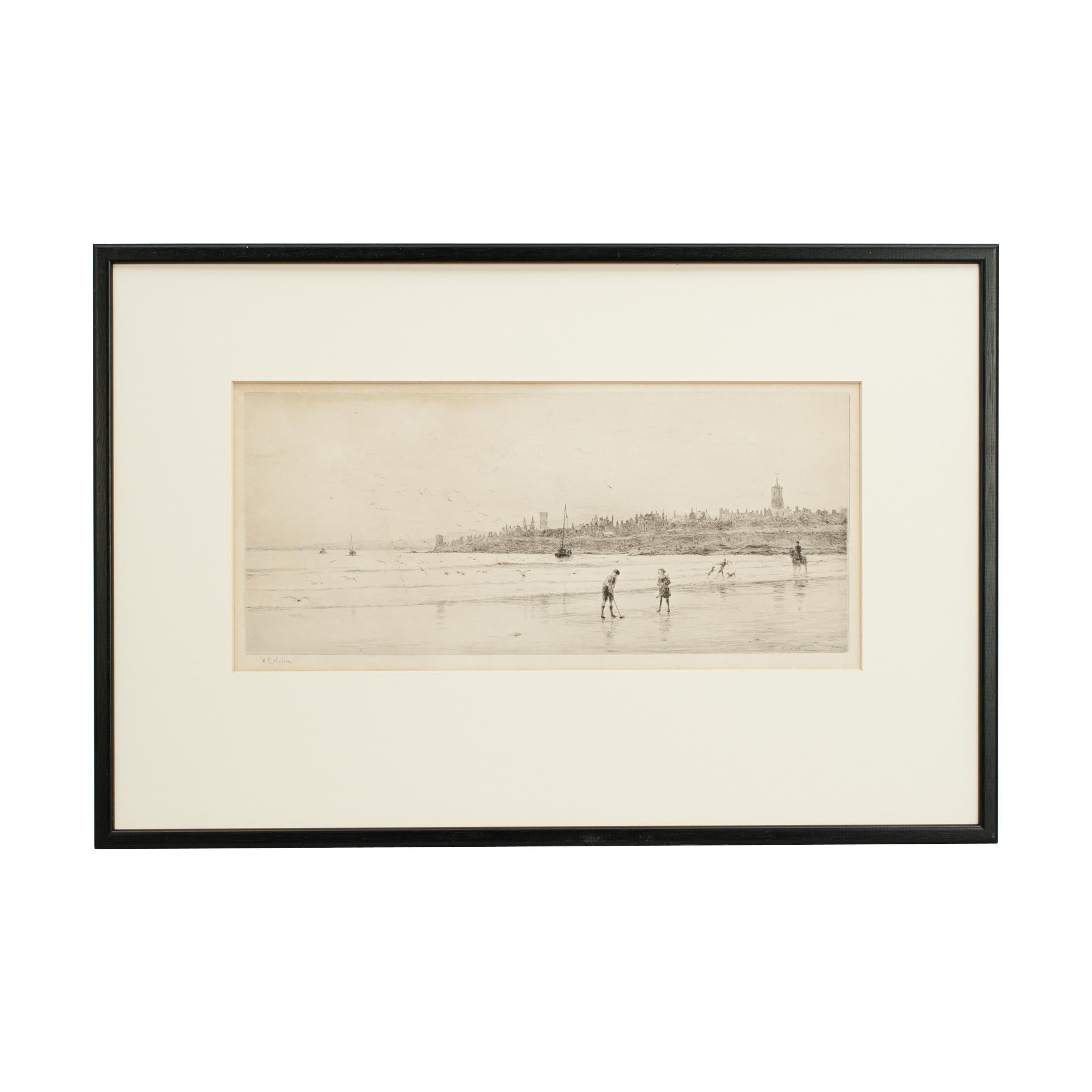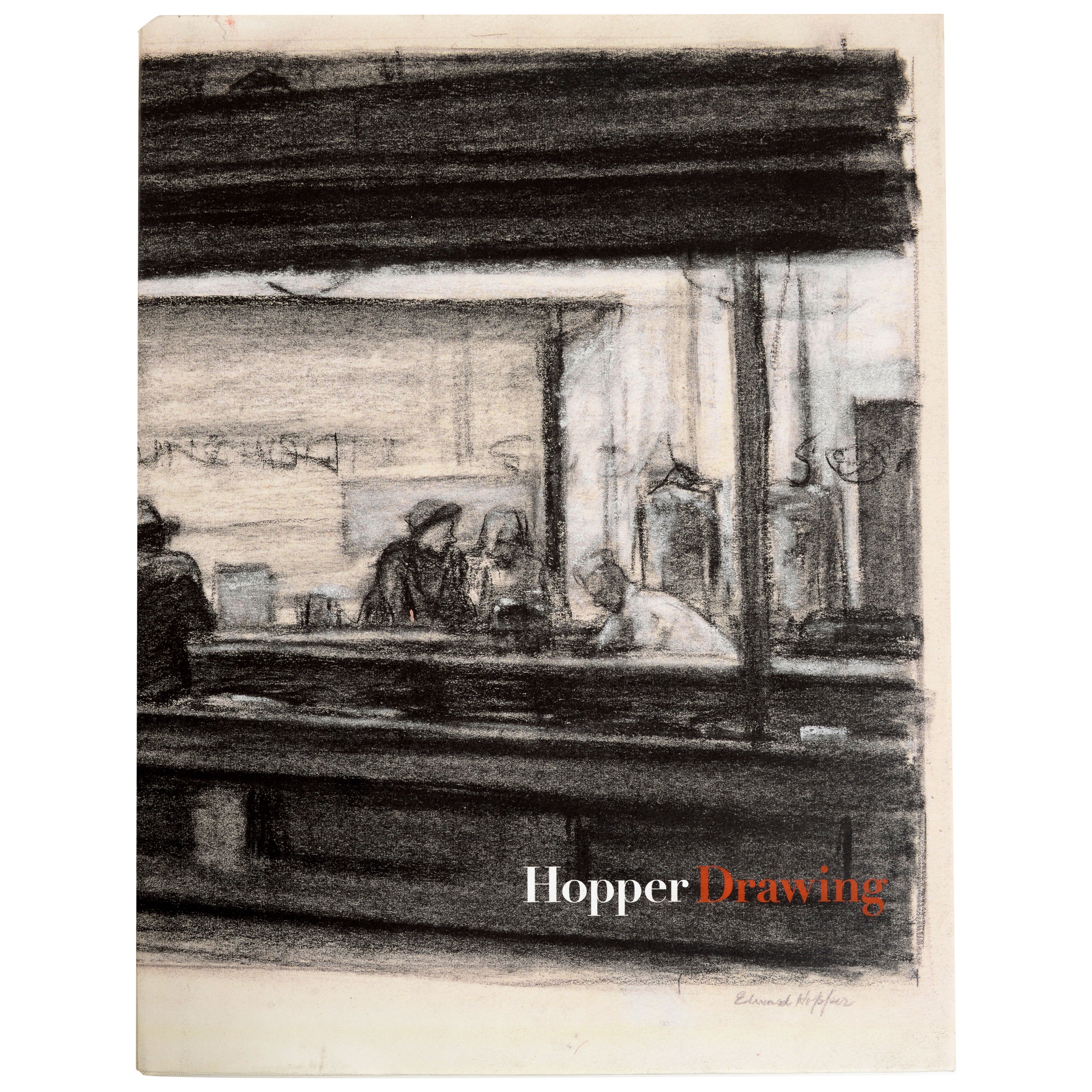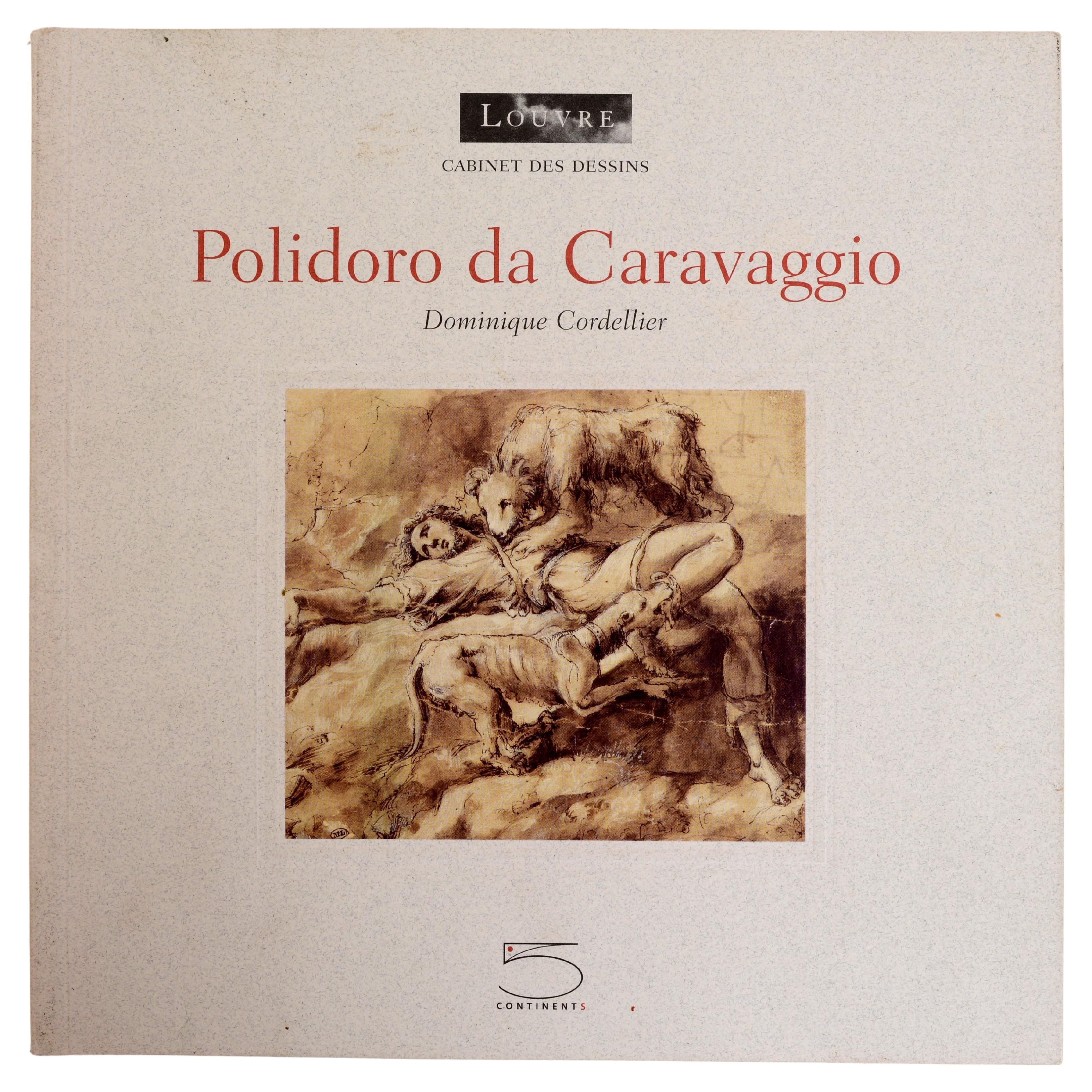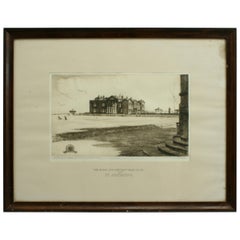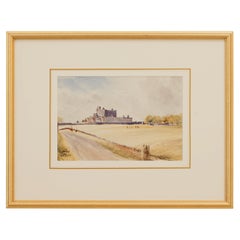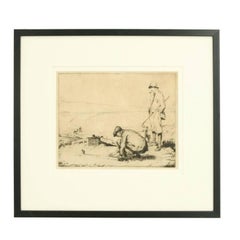
Golfing Picture, Dry Point Etching by John R. Barclay
View Similar Items
Want more images or videos?
Request additional images or videos from the seller
1 of 3
Golfing Picture, Dry Point Etching by John R. Barclay
About the Item
- Dimensions:Height: 8.08 in (20.5 cm)Width: 10.04 in (25.5 cm)Depth: 0.04 in (1 mm)
- Style:Sporting Art (Of the Period)
- Place of Origin:
- Period:
- Date of Manufacture:circa 1922
- Condition:
- Seller Location:Oxfordshire, GB
- Reference Number:Seller: 259481stDibs: LU975711553193
About the Seller
5.0
Platinum Seller
These expertly vetted sellers are 1stDibs' most experienced sellers and are rated highest by our customers.
Established in 1977
1stDibs seller since 2013
690 sales on 1stDibs
Typical response time: 1 hour
Associations
LAPADA - The Association of Arts & Antiques Dealers
More From This SellerView All
- St Andrews Golf Club, Bicentenary Etching, Ltd Edition 10/75Located in Oxfordshire, GBSt Andrews golf club bicentenary etching. A rare etching of the Royal and Ancient Golf Club St Andrews Clubhouse, produced as Ltd. edition for the...Category
Mid-20th Century British Sporting Art Drawings
MaterialsPaper
- Lion & Lioness, Herbert Dicksee, Marauders African Wildlife PictureLocated in Oxfordshire, GBMarauders, antique etching by Herbert Dicksee. A wonderful framed etching by Herbert Dicksee of a lion and lioness, Marauders. The black and white wildlife picture shows a lion and ...Category
Vintage 1910s British Sporting Art Drawings
MaterialsPaper
- Golf Painting by John Blair, Craigmillar Park G CLocated in Oxfordshire, GBCraigmillar Park Golf Club Watercolour, John Blair. An atmospheric original watercolour of Craigmillar Park Golf Links in Edinburgh by the Scottish artist John Blair (1849-1934). Craigmillar Castle from which the club derives its name from is clearly seen in the background and the painting is signed to the lower left corner. Craigmillar Castle was a haunt of Mary Queen of Scots, the world's first recorded lady golfer. How ironic then, that since the golf club's inception equality of the sexes was the rule at Craigmillar Park. John Blair was a Scottish painter, predominantly of watercolour landscapes. Of humble beginnings in Berwickshire, he moved to Edinburgh to study and spent the rest of his life there. His paintings mainly reflect the landscapes around him, both of urban settings and also of the castles, sea and lochs of the Borders. As well as his original work, his paintings were viewed by a wide audience in the form of picture postcards, book endpapers and illustrations. Taken from Craigmillar Park Golf Club website:- Craigmillar Park Golf Club was constituted in 1895 and moved to its present location in 1907. It was extended to 18 holes (designed by James Braid) in 1927. On 12th of January 1895 the Scotsman newspaper carried the following "birth" announcement : "NEW GOLF COURSE IN THE SOUTH SIDE OF EDINBURGH. A nine-hole golf course is being formed at Craigmillar Park and is expected to be ready for play in February. A lease of the ground which extends from Crawfurd Road to Lady Road has been obtained from Captain Gordon Gilmour of Liberton and Craigmillar. The principal entrance will be from Crawfurd Road within three minutes' walk of the Craigmillar Park car terminus and Newington Suburban Station. The course is about a mile in length and has been laid out by Mr. Day of Musselburgh, who has given a very favourable report of the suitability of the ground for the purpose. Already about 150 ladies and gentlemen have been admitted as members of the club." Many, perhaps most, of the new clubs created about the same time as Craigmillar Park were (and some continue) as male preserves. It is clear that from the outset equality of the sexes was the rule at Craigmillar Park, although it was not until 1914 that the subscriptions were equalised. The course was situated in an area of land close to Newington Railway Station and the Newington Bus and Tram Terminus and was thus, easily accessible. In those days there was very little building development between the course and the iconic Craigmillar Castle from which the club derives its name. The castle was a haunt of Mary Queen of Scots, the world's first recorded lady golfer. How ironic then, that since the golf club's inception, ladies have had equal status with men and there was no gender barrier to any office. This was in an age when golf clubs were regarded as male preserves. In 1914, ladies started paying exactly the same subscription as their male counterparts and this has remained right up to the present day. When you consider that all women did not get the vote until 1928, Craigmillar Park Golf Club were indeed trendsetters! Despite the club's early success, with 400 members and a waiting list, they were dealt a blow when their course at Newington was taken over for housing development. They decided, rather than to disband, to relocate the golf course to the eastern slopes of the Blackford Hill in 1907. Once again the close proximity of Blackford Railway Station and Bus Terminus were factors in their decision making. Another factor in choosing Blackford Hill was the potential for increasing the length of the 9 holes that had been played for in the course at Newington and possibly even converting the new course to 18 holes at some future date. This is in fact what happened and James Braid designed a splendid 18 hole course which officially opened in 1927. The new course was a real test of golf with no two holes being the same. The course boasts marvellous views over Edinburgh and Fife and down the coast to the Berwick Law, Bass Rock...Category
Antique Early 1900s European Sporting Art Sports Equipment and Memorabilia
MaterialsPaper
- Antique St Andrews Golf Etching by W.L. Wyllie, circa 1900Located in Oxfordshire, GBA very charming etching of two children playing golf on the beach at St Andrews, in the background is the town of St Andrews with the Castle & Cathedral prominent in the sky line. Fr...Category
Antique Early 1900s British Sporting Art Sports Equipment and Memorabilia
MaterialsWood, Paper
- Golf Oil Painting of Dr. William Laidlaw Purves by Hon. John CollierBy John CollierLocated in Oxfordshire, GBImpressive modern Golf Portrait, William Laidlaw Purves. Large oil on canvas of Dr. William Laidlaw Purves after the original oil painting by the Hon. John Collier (1850 - 1934), a prominent London artist. The painting is un-framed but is stretched and ready to hang, artist of this particular painting is unknown. The original painting now hangs at Royal St. George's, Sandwich. William Laidlaw Purves, oculist and obsessive golfer, was an Edinburgh born surgeon who worked in London, but remembered by most for his contributions to the golfing world. A very influential man, he was one of the key figures behind the spread of the game of golf in England towards the end of the 19th century. He won many important club trophies, the last being in 1914, aged 71 with a handicap of 3. He died at his home Hardwick Cottage, Wimbledon Common on 30th December 1917, and at the time he was a member of no fewer than 32 golf clubs. As a student Purves had played golf at Bruntsfield Links in Edinburgh and by the time of his London appointment he was a member of both the Honorable Company of Edinburgh Golfers and the Royal and Ancient Golf Club of St Andrews. Upon his move to London in 1874 he joined the London Scottish and Wimbledon Golf Club. The two clubs shortly separated into two separate clubs, The London Scottish Golf Club and the Wimbledon Golf Club, but both continued to play on Wimbledon Common. In 1882 the Wimbledon became the Royal Wimbledon Golf Club and Purves became an active committee member, later being elected Captain. As the two clubs also shared the Common with the public play was restricted, so together with a fellow Scot and keen amateur golfer (Henry Lamb...Category
2010s European Sporting Art Sports Equipment and Memorabilia
MaterialsCanvas
- Vintage Golf Book, Golf and Golfers, Past and Present.Located in Oxfordshire, GBGolf And Golfers, Past And Present By J. Gordon McPherson. A rare, well produced first edition golf book, Golf And Golfers, Past And Present. Published in 1891 by William Blackwood &...Category
Antique 1890s British Sporting Art Sports Equipment and Memorabilia
MaterialsPaper
You May Also Like
- An Unusual Pencil Drawing of “Canton”, a Three-Masted Whaling Ship-at This PointLocated in Lymington, HampshireAn unusual pencil drawing of “Canton“ a three masted whaling ship by Harold Wyllie. New Bedford was a major whaling centre in the 19th century. Photograp...Category
Antique Early 1900s English Drawings
MaterialsPaper
- 17th Century Map of Cumberland County in Northwest England Printed by John SpeedBy John SpeedLocated in Middleburg, VARare extremely early map of the county of Cumberland in the Northwest of England. Printed by John Speed, hand colored. Excellent condition. English. Dated...Category
Antique Early 17th Century English Maps
MaterialsPaper
- Rare & Large Antique Gothic Cathedral / Church Etching Signed Albany Edmond 1915Located in Lisse, NLRare size and original Gothic interior etching of York Cathedral by Albany E. Howard, (1872-1936). This large size and incredibly elaborate work of Gothic art is made and signed by ...Category
Early 20th Century English Gothic Revival Religious Items
MaterialsPaper, Oak, Glass
- Drawing in Silver and Gold: Leonardo to Jasper Johns 1st Ed Exhibition CatalogLocated in valatie, NYDrawing in Silver and Gold: Leonardo to Jasper Johns by Stacey Sell, Hugo Chapman and Kimberly Schenck. With gift card from the curator at National Gallery of Art, Washington. Publis...Category
21st Century and Contemporary American Books
MaterialsPaper
- Delhi Stones and Streets by C.S.H. Jhabvala, Signed by the AuthorLocated in valatie, NYDelhi: Stones And Streets by C.S.H. Jhabvala. Published by Ravi Dayal, Delhi, 1990. 2nd Ed Signed hardcover with dust jacket. Professor Cyrus S.H. Jhabvala was a prominent Indian arc...Category
1990s Indian Books
MaterialsPaper
- Hopper Drawing by and inscribed by Carter E Foster to Herbert Kasper, 1st EdLocated in valatie, NYHopper Drawing by Carter E Foster. 2013, Whitney Museum of American Art. 1st Ed hardcover with dust jacket. This monograph was prepared to accompany the exhibition at the Whitney Museum of American Art, from May 23 to October 6, 2013. The exhibition then traveled to Dallas and finally to the Walker Art Center in 2014. The book was owned by Herbert Kasper and inscribed by the author to him. Herbert Kasper was an American fashion designer known as Kasper. He studied English and advertising at New York University and fashion at the Parsons School of Design in New York from 1951–53 and l'Ecole de la Chambre Syndicale de la Couture Parisienne in 1953. He left NYU to serve in the US Army in Europe. After World War II he enrolled at Parsons, where he became a protégé of milliner Fred Frederics. After graduating, he returned to Paris for two years developing his skills in design while working for Jacques Fath, Christian Dior, and Marcel Rochas. When he returned to the US, he worked for Frederics at Mr. John. He was an avid art collector, and in 2011, the Morgan Library and Museum devoted an exhibition, called “Mannerism and Modernism: The Kasper Collection of Drawings and Photographs,” to the designer. Hopper Drawing is the first major museum exhibition to focus on the drawings and creative process of Edward Hopper (1882–1967). More than anything else, Hopper's drawings reveal the continually evolving relationship between observation and invention in the artist's work, and his abiding interest in the spaces and motifs--the street, the movie theatre, the office, the bedroom, the road—that he would return to throughout his career as an artist. This exhibition showcases the Whitney's unparalleled collection of Hopper's work, which includes over 2,500 drawings bequeathed to the museum by his widow Josephine Hopper...Category
21st Century and Contemporary American Books
MaterialsPaper
